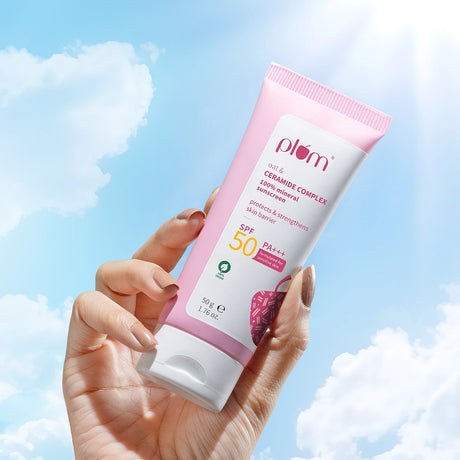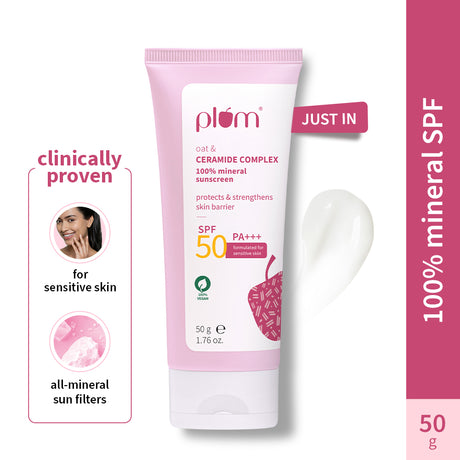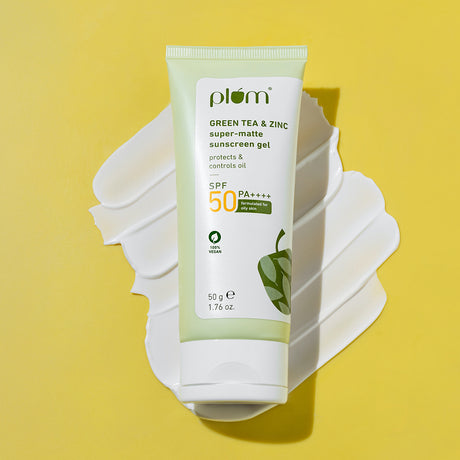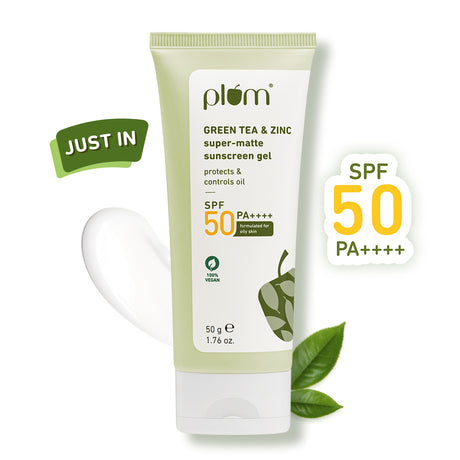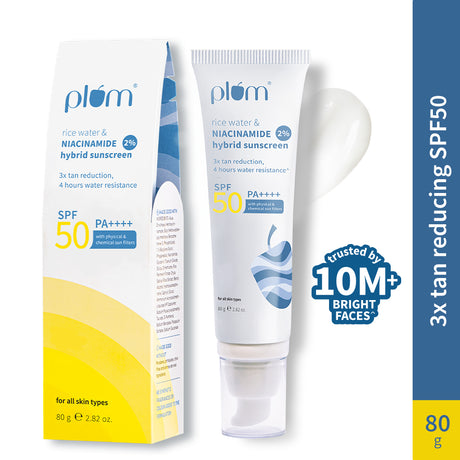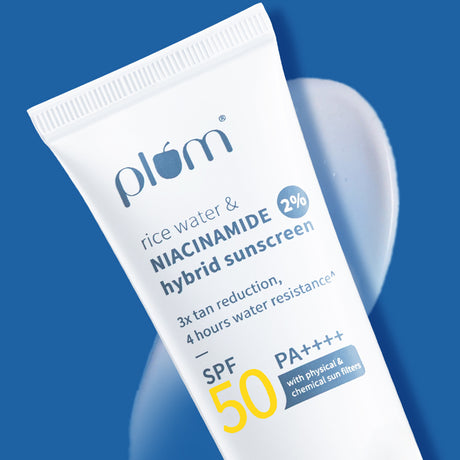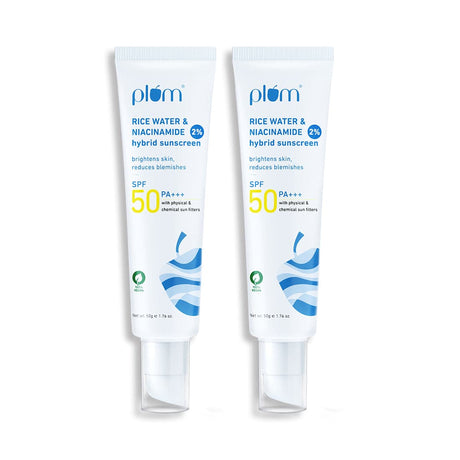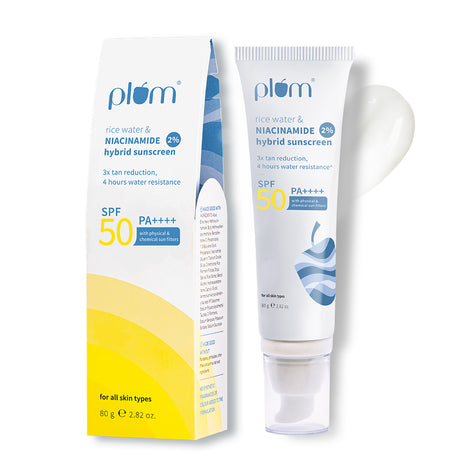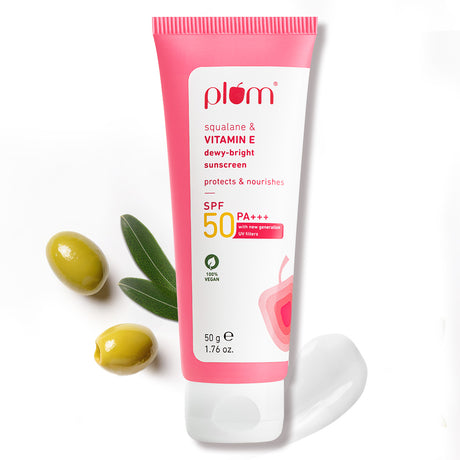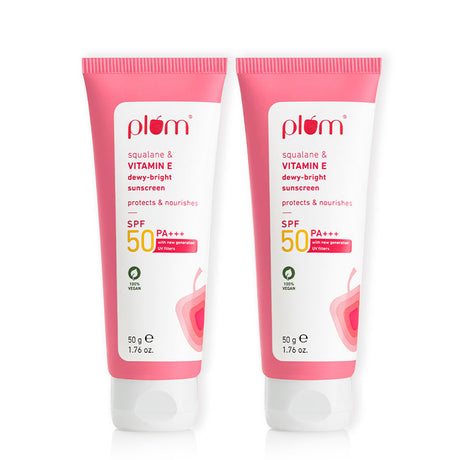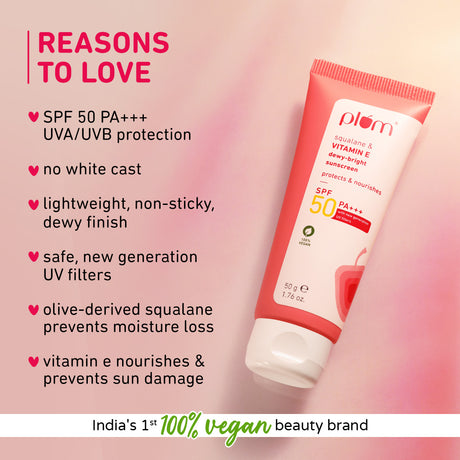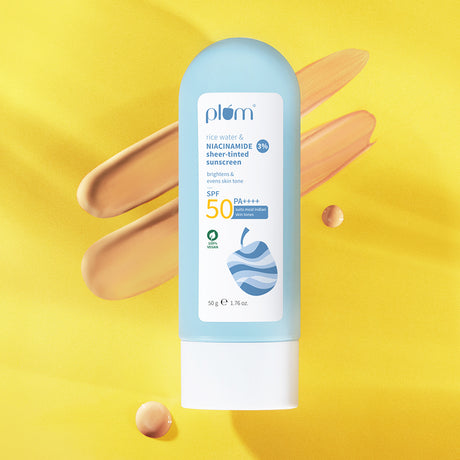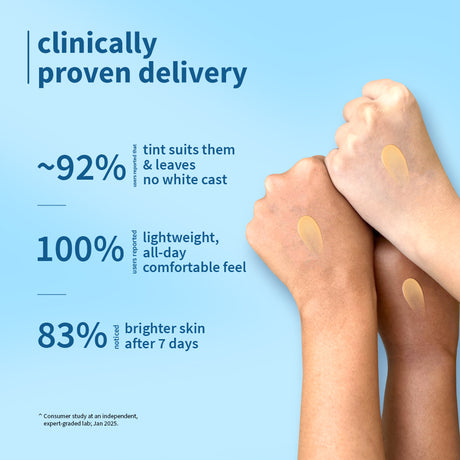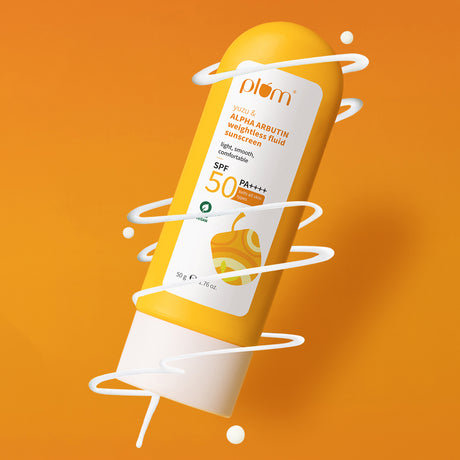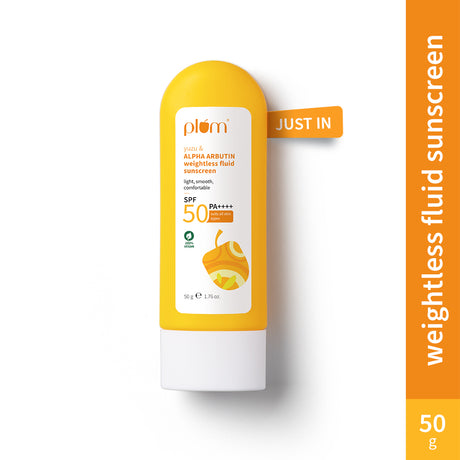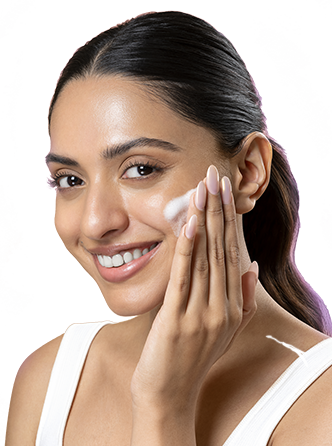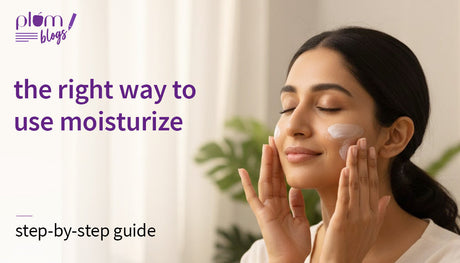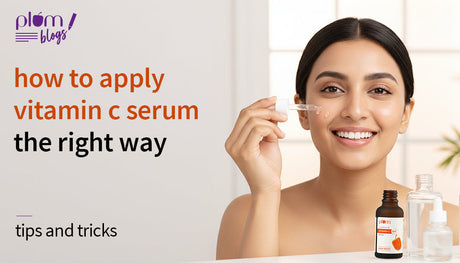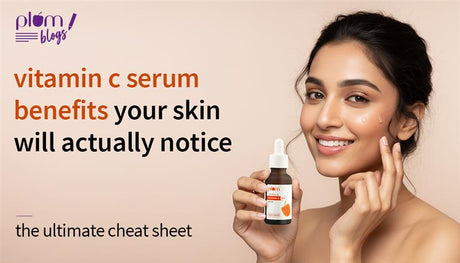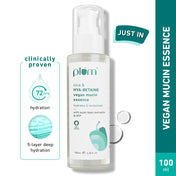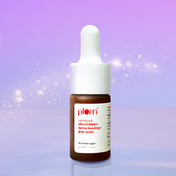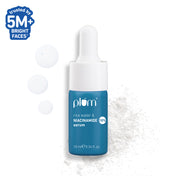
IN THIS ARTICLE
Sure, you know the drill: sunscreen is non-negotiable, and you need to apply and reapply an adequate amount on all days, whether sunny, rainy, or cloudy!
It protects you from UV rays, responsible for a myriad of skin problems, including photo-aging, sunburn, weakened skin barrier, and even skin cancer.
However, it's crucial to pick the right formula that suits your skin type, concern, and lifestyle.
Before buying a sunscreen, you must know its basics, like types of sunscreen, which one you should use, and how to use it.
There are three types of sunscreen: physical, mineral, and hybrid.
Let’s explore the details of mineral vs chemical sunscreens to help you decide which is the best choice for you.
What is a mineral sunscreen?
Picture mineral sunscreens like a skin shield that reflects the UV rays (categorized into UVA (responsible for aging) and UVB (responsible for sunburn)) away before they can even touch the dermis.
Also known as physical sunscreens, mineral sunscreens are formulated with ingredients like zinc oxide or titanium dioxide, that sit on the surface of your skin and act as a physical barrier against UV radiation.
The benefits of mineral sunscreen
Mineral sunscreens have distinct qualities from other types of sunscreens, making them preferable for people who dislike sunscreens or have sensitive skin.
1. Instant Protection:
One of the key advantages of mineral sunscreens is that they start working immediately after their application. No need to wait 15–20 minutes before heading outdoors like you do with chemical sunscreens. The minerals form a physical barrier on your skin without any delay.
2. Sweat-resistant:
Minerals like zinc oxide, which are used in physical sunscreens, are majorly insoluble in water. This allows them to stay on your skin for a longer time, irrespective of sweating.
3. Photostable:
Mineral sunscreens tend to stay on the skin longer as they are efficiently resilient to sun exposure.
4. Suitable to all skin types:
Since mineral sunscreens do not get absorbed into the skin, they are gentle and less likely to cause irritation or trigger allergic reactions.
Mineral sunscreens are considered a safer option for those with sensitive skin prone to reactions and allergies.
5. Enhanced sun protection:
Zinc oxide and titanium dioxide are the only two FDA-approved minerals that can be used in a sunscreen formula.
Both minerals are completely inert, which allows them to pair with other active ingredients like ceramides, hyaluronic acid, and niacinamide to boost the efficacy of the sun protection formula.
6. Eco-friendly and biodegradable
Mineral sunscreens are generally considered environmentally friendly, as they do not harm coral reefs and are biodegradable, unlike chemical sunscreens, which contribute to coral bleaching and harm marine life.
7. Safe for everyone
Fun fact: Powdered zinc was traditionally used to treat diaper rashes in infants due to its anti-inflammatory and healing properties. Which is why it is considered suitable for all skin types, irrespective of age.
Mineral-based sunscreens are also approved by doctors to be used during pregnancy, being gentle nd safe on kids, infants, and teenagers.
What is chemical sunscreen?
Chemical sunscreens are formulated with ingredients like avobenzone, octinoxate, or oxybenzone, which absorb UV rays and convert them into indirect heat.
Unlike mineral sunscreens, chemical sunscreens penetrate the skin and work from within to prevent UV damage.
They absorb UV rays and convert them into heat, which is then dissipated, preventing damage to the inner layers of your skin.
The benefits of chemical sunscreens
1. Invisible finish and lighter feel:
One of the major benefits of chemical sunscreens is that they blend seamlessly into the skin without leaving any white residue. Chemical sunscreens are typically thinner in texture, making them feel lighter on the skin. They leave no white cast and are comfortable on the skin, perfect for everyday use.
2. Advanced formulations:
Chemical sunscreens can have a more advanced array of ingredients that can protect and provide additional support to skin repair.
3. Water-Resistant options:
Many chemical sunscreens offer water-resistant formulas, making them ideal for sports, swimming, or beach days. They are designed to stay on the skin longer, even when you sweat or get wet.
Mineral sunscreen vs chemical sunscreen
While both sun protection formulas are potent and have their own merits, you must consider your needs and skin type to choose the one for you.
|
Mineral sunscreen |
Chemical sunscreen |
|
Forms a layer of protection on your skin and reflects the UV rays away from its surface |
Absorbs the UV rays, and converts them into heat to provide sun protection |
|
Can tackle different frequencies of UV rays |
Can tackle a limited range of UV rays, depending on the composition |
|
Provides instant protection upon application |
Takes 15-20 minutes to activate |
|
It is photo-stable and stays longer on your skin |
It may not be photo-stable, depending on its composition. Requires more frequent reapplication than a mineral sunscreen |
|
Suitable for all skin types |
Might cause irritation, rashes, and redness in sensitive skin types |
Hybrid sunscreens
Hybrid sunscreens are formulated with the properties of both chemical and mineral sunscreens. They are light-weight, broad-spectrum and blend into your skin easily without any white cast or greasiness.
Which one should you use? - Mineral or chemical?
Mineral Sunscreens:
They are best for those with sensitive skin. Since they sit on the skin’s surface without absorption, they are less likely to clog pores or cause irritation and so can be a better choice for oily and acne-prone skin Moreover, thanks to their mild formulations, they are suitable for both expecting and new mothers, and even for kids.
Chemical Sunscreens:
Chemical sunscreens are often preferred for their non-greasy feel. These are often better suited for people with oily skin, as they have a lighter, more matte finish. However, it can irritate the skin, especially if your skin is sensitive. Moreover, owing to its ingredients, it is not suited for pregnant or lactating mothers and kids.
However, if you choose chemical sunscreens with active chemical UV filters, opt for a formula with non-nano particles to ensure the safest application as some ingredients can get absorbed into the bloodstream through your skin to cause irritation and rashes.
Here, it’s important to note that advanced skincare formulations have significantly improved both types of sunscreens, addressing many of their previous shortcomings.
Modern mineral sunscreens now feature smoother textures that blend seamlessly into the skin without leaving a white cast, while chemical sunscreens have been improved to be less irritating and more suitable for sensitive skin.
Best sunscreen practices
Here’s what you can do to put up a good fight against the sun:
1. Check for Broad-Spectrum Protection
Always choose a sunscreen with broad-spectrum protection, with an SPF of at least 30 that guards against both UVA and UVB rays. Both mineral and chemical sunscreens can offer this protection, but mineral sunscreens are naturally effective against a wider range of UV frequencies.
2. Reapply correctly, regularly, and multiple times throughout the day
Sunscreen isn’t a one-and-done deal. Reapply every two hours, especially if you're outdoors for a longer duration. While using chemical sunscreens, apply them 15-20 minutes before stepping out into the sun.
3. Don’t Skip Sunscreen
Apply sunscreen as part of your morning skincare routine, even if you’re staying indoors. UV rays can penetrate windows, so don’t skip this essential step.
4. Layer Up
Use sunscreen as the last step in your skincare routine. If you wear makeup, make sure to apply a generous layer of sunscreen first, and then apply makeup over it.
Avoid stepping out during the peak sunshine hours to reduce overall sun exposure.
5. Opt for Water-Resistant Formulas
If you’re into sports, choose a water-resistant sunscreen. While mineral sunscreens are naturally water-resistant, making them great for outdoor activities, even chemical sunscreens come in waterproof formulas.
Both chemical and mineral sunscreens are potent formulas that can give you effective sun protection. Choose your preferred formula today: stay sun-safe, all day every day.
Here is a short guide on choosing formulas based on your skin type:
-
If you have sensitive skin or are looking for a sunscreen suitable for pregnancy and kids, choose Plum Oat & Ceramide Complex 100% Mineral Sunscreen.
-
If you have a combination to oily skin, you can opt for Plum’s Green Tea & Zinc Super-Matte Sunscreen Gel | SPF 50 PA ++++| SPF for Oily Skin broad-spectrum sunscreen.
-
For all skin types, you can try Plum's 2% Niacinamide & Rice Water SPF 50 PA+++ Hybrid Sunscreen dewy sunscreen.
-
Plum’s Squalane & Vitamin E SPF 50 PA+++ Dewy-Bright Sunscreen is the best sunscreen for dry skin.
-
Need a tinted sunscreen that gives a natural finish, opt for Plum’s Rice water & 3% Niacinamide sheer-tinted sunscreen
-
Lastly, for an ultra-light feel that protects with a lightweight feel, choose Plum Yuzu & Alpha Arbutin Weightless Fluid Sunscreen
FAQs:
Which is better, a mineral or chemical sunscreen?
Mineral sunscreen can be considered better than chemical sunscreens. Mineral sunscreen sits on the surface without getting absorbed into the skin. It is suitable for most skin types, offering safer and better sun protection. For the best of both worlds, you can opt for hybrid sunscreens too.
What is the healthiest sunscreen to use, mineral or chemical?
Mineral sunscreen is the healthiest sunscreen to use as it forms a physical barrier on the surface of your skin to reflect the harmful UV rays. It is safe for people with sensitive skin, and also suitable for pregnancy.
Should I use mineral or chemical sunscreen on my face?
You can opt for either, depending on the suitability of your skin and your preference of texture.



